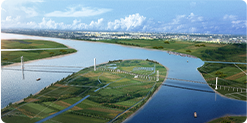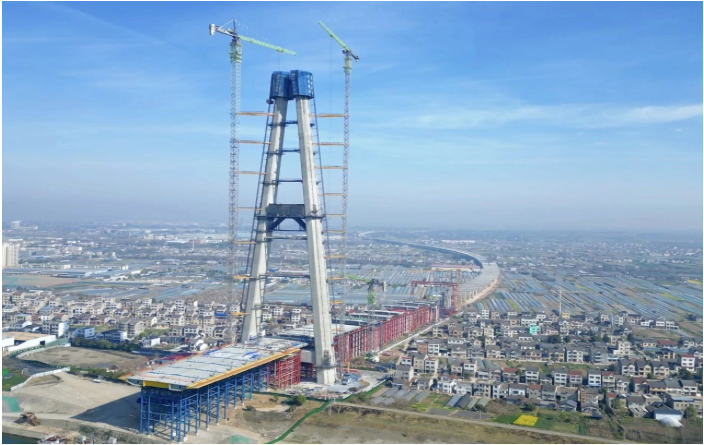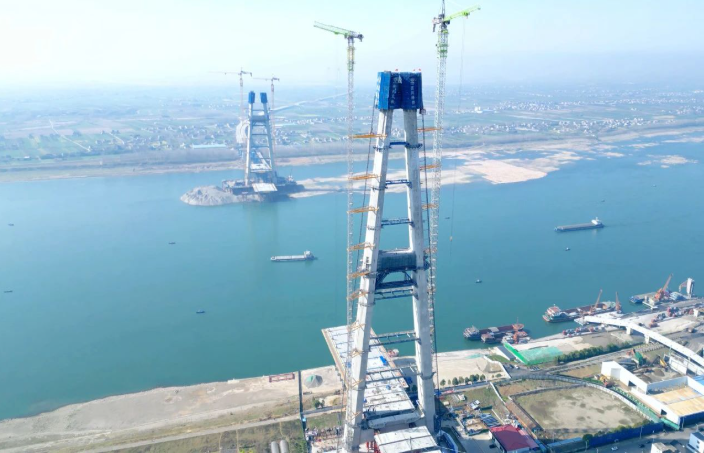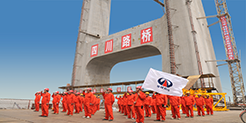- About
- News
-
Business
-
Engineering Construction
Committed to excellence in engineering construction and project execution. -
Mining And New Materials
Integrating mining operations with the development of cutting-edge new materials. -
Clean Energy
Committed to the development of clean energy solutions for a sustainable future.

-
-
Technological
-
Major Awards
Honored with major awards that reflect our excellence and leadership in the industry. -
Research And Development Platform
Equipped with a state-of-the-art research and development platform to support cutting-edge solutions. -
Science And Technology Achievements
Showcasing our breakthroughs and applied technological accomplishments in infrastructure development. -
Innovation Dynamics
Stay updated on our latest innovations and technological advancements.

-
- Brand
- Human Resources
-
Social Responsibility
-
Rescue And Disaster Relief
Committed to emergency rescue and disaster relief with swift and effective response capabilities. -
Poverty Alleviation/Rural Revitalization
Committed to poverty alleviation and rural revitalization for sustainable community development. -
Social Welfare(Donate To Support Education)
Committed to social welfare through philanthropic efforts, including educational funding and support. -
Sustainable Report
Our Sustainability Report details our commitment to environmental stewardship, social responsibility, and sustainable growth.

-
-
Investors Relation
-
Stock Price Situation
Overview of our stock performance and market trends. -
Temporary Notice
Timely announcements and urgent notices to keep stakeholders informed. -
Regular Report
Regular reports providing insights into our financial performance and business operations. -
Dividend Distribution Situation
Information on dividend distribution and shareholder returns. -
Investor Hotline
Dedicated investor hotline providing timely support and information.

-
Media Focus | Speeda's "Thousand-year-old Island" Is Just around the Corner! The main tower on the north bank of the Zhijiang Bailizhou Yangtze River Bridge was capped
Pubdate :2025-05-22
On March 21st, with the pouring of the last cubic meter of concrete, the main tower on the north bank of the Zhijiang Bailizhou Yangtze River Bridge, constructed by the Bridge Branch of the Road and Bridge Group, was successfully capped. The focus of the project will now fully shift to the construction of the superstructure, laying a solid foundation for the early end of Bailizhou's history as a "thousand-year-old island".

The Zhijiang Bailizhou Yangtze River Bridge, as a key control project of the Dangzhisong Expressway, connects Bailizhou Town with the urban area of Zhijiang City. It is the only expressway bridge passage on the northern bank of Bailizhou, a "thousand-year-old island". In the past, people had to travel between the two places by ferry. After the bridge was opened to traffic, the travel time between the two places will be shortened from 2 hours to 15 minutes, and the transportation cost of 500,000 tons of agricultural products such as pears and cotton each year will also be reduced by 40%. The main bridge of the bridge is 1,549 meters in total length and is currently the world's largest span steel-UHPC composite beam cable-stayed bridge under construction. The main tower on the north bank, which was capped this time, is 241 meters high, approximately the height of an 80-story building. It adopts an A-type structural design and uses A total of 7,178 tons of steel and 27,028 cubic meters of concrete.

Smart use of "dual-machine drilling" sets a "benchmark for deep piles". In response to the complex geological conditions of the Yangtze River alluvial plain where the north tower of the bridge is located, the project team adopted a combined hole-forming process of "rotary drilling rig + rotary drilling rig" and ultrasonic hole-forming quality inspection technology, successfully completing the construction of 66 super-long pile foundations with a diameter of 2.5 meters and a depth of 126 meters. The total length of the drilled holes reached 8,316 meters. Moreover, by optimizing the positioning process of the steel cage, The verticality deviation of the 126-meter ultra-deep hole was achieved to be less than two thousandths, far exceeding the construction standards and setting a new benchmark for the construction accuracy of deep foundations of Yangtze River Bridges.
Innovate a "combination of punches" to overcome the "tower base difficulties". The main tower base on the north bank of the bridge adopts a unique octagonal shape, with an inclination Angle of 26.5 degrees, which belongs to a typical large-inclination tower base. Due to the numerous inclined surfaces and large volume, the stress is more concentrated than that of the conventionally shaped tower base, resulting in a greater risk of cracking. The project team organized and carried out technical research and development, optimizing the concrete mix ratio, laying water pipes inside the concrete, and using piezoelectric ceramic sensor technology to control the stress of the tower base concrete and the temperature difference between the inside and outside in real time. Through this "combination of measures", they successfully solved the problem of easy cracking of the tower base and also ensured its aesthetic and neat appearance.
Skillfully apply the "building block technique" to firmly build the "bridge joints". The lower crossbeam, as a crucial part connecting the main tower and the bridge deck, is like the "joint" of the bridge, directly affecting the overall safety. To ensure the construction quality, the project team, through repeated calculations and simulations, adopted the "asynchronous tower beam + post-poured strip" construction method. Just like building with blocks, they first assembled the middle part and then connected the two sides after it was stable. This is just like adding a layer of buffer to the "joints" of the bridge, avoiding the risks of stress concentration and cracking, and making the bridge more stable.
Create "new driving forces" through intelligent manufacturing and build "mobile factories". In response to the long-standing drawbacks of traditional climbing formwork construction, the project team has developed an intelligent tower construction equipment system suitable for "A-type towers". Through digital twin technology, A "vertical mobile factory" is constructed, transforming high-altitude discrete operations into standardized assembly line construction. By simultaneously applying the 5G remote tower crane control system, ground operators can precisely direct the hoisting operation at a height of 200 meters through the panoramic digital interface, which greatly enhances the automation and intelligence level of the construction and also ensures the safety and efficiency of the construction. Up to now, the project department has applied for 3 invention patents, 2 provincial-level construction methods, obtained 25 utility model patents, 2 provincial-level QC activity awards and 5 software Copyrights.
Extended reading
The Dangzhisong Expressway is a key project in the "14th Five-Year Plan" for comprehensive transportation in Hubei Province. It is approximately 75 kilometers long, with a total investment of about 15.8 billion yuan and a construction period of 48 months. After the project is completed, it will further expand the urban development space, unblock the north-south transportation "meridians" of the "Yichang-Jingzhou-Jingmen-Enshi" urban agglomeration, and effectively promote the development of the "Yichang-Jingzhou-Jingmen-Enshi" urban agglomeration from point to area, from line to area, and from fan shape. It is of great significance for improving the multimodal transport system of the Three Gorges Hub, promoting the rapid development of the Yangtze River Economic Belt in Hubei Province, and assisting the rise of the central region.
The Zhijiang Bailizhou Yangtze River Bridge, as the core hub of the Dangzhisong Expressway, connects three national trunk roads: Shanghai-Chengdu, Shanghai-Chongqing and Yichang-Yueyang. It is of great significance for building a one-hour economic circle between Yichang and Jingzhou.





